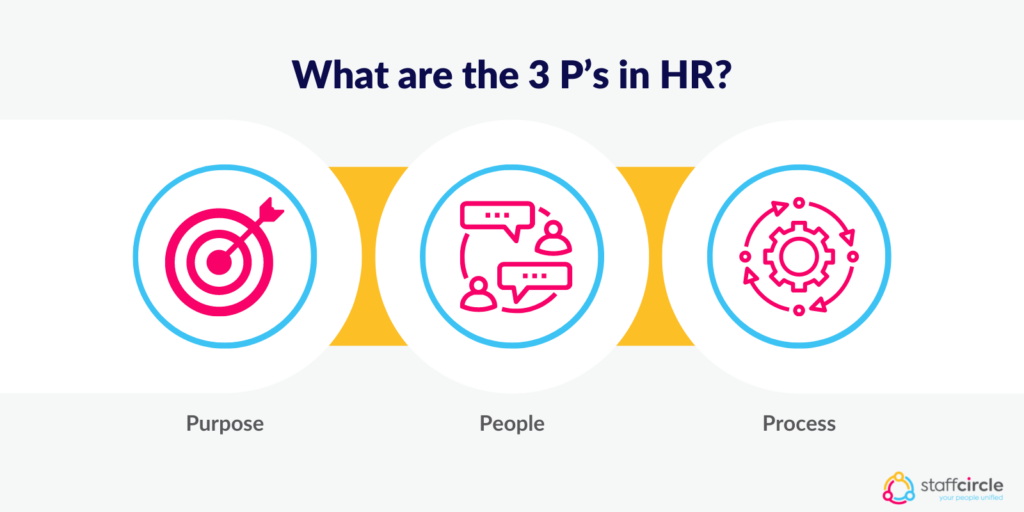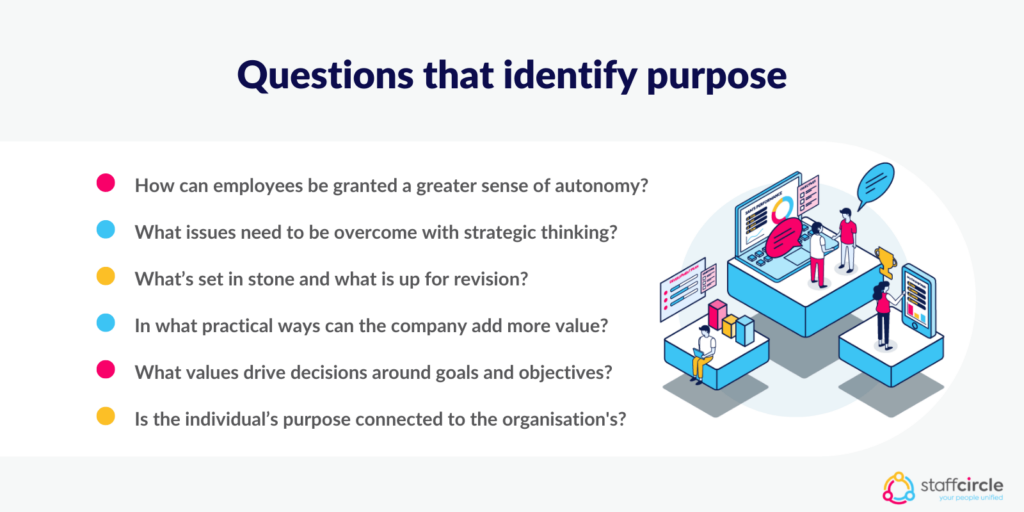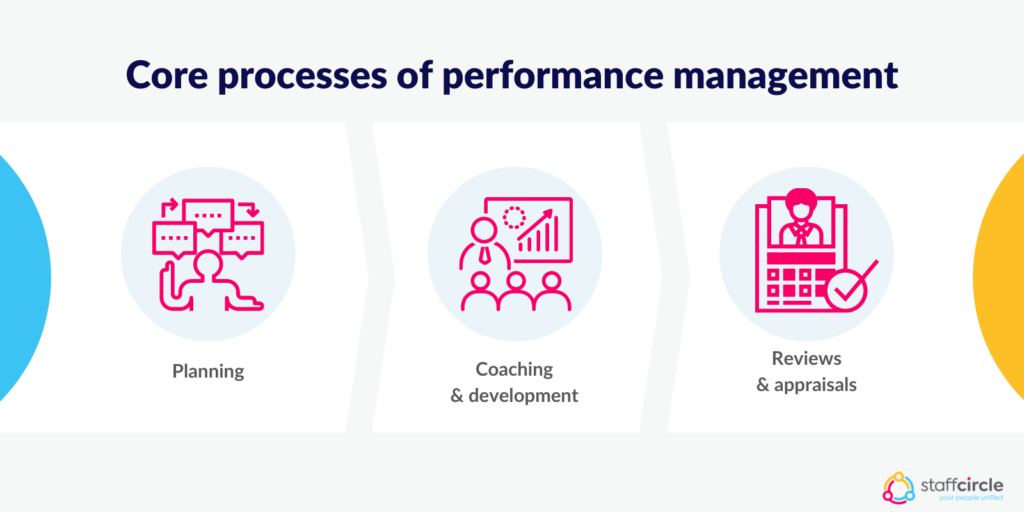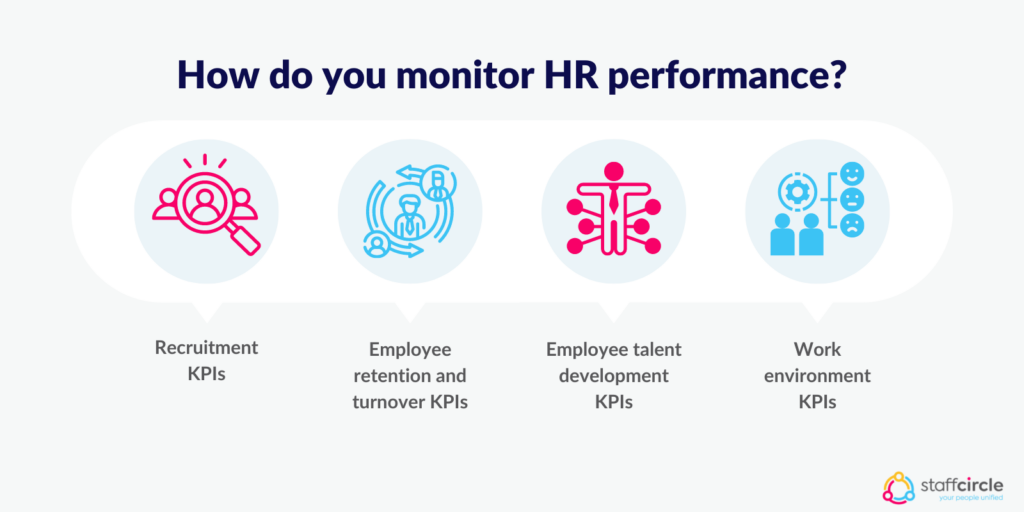Employee performance management is a core function of a company’s human resources department. It drives talent development, establishes goals, and sets the stage for a positive work environment. In this guide, we’ll explore the importance of the 3 Ps of effective employee performance management. You’ll discover how to monitor performance standards for a consistent employee experience.
What is HR performance management?
The human resources department plays a significant role in all aspects of performance management. They help each employee on their journey throughout their time with a company, assisting with goal setting, coaching and development, and health and well-being matters.
Numerous studies have outlined the significant impact a great performance management system can have on business outcomes. For instance, the study from Vidya School of Business, Performance Management System: A Strategic Tool for Human Resource Management, points out:
“Performance management is a useful tool for aligning all the major organizational functions and sub-functions so that the focus is directed towards the attainment of the organizational goal. By clearly explaining both the individual and team responsibilities in the form of Key Responsibility Areas (KRAs) as well as by creating an understanding of shared responsibilities, a good performance management system smoothen the progress and development of employees.”
In this article, we’ll explore how the 3 Ps can be used by human resources departments to help drive this alignment between employee objectives and the company’s overall goals. We’ll also examine HR performance standards and how you can effectively monitor them using performance management software.
What are the 3 Ps in HR?
The 3P’s principles sum up the core functions of HR performance management:
- Purpose
- People
- Process
Let’s take a look at each of these functions in more detail.

Purpose
The purpose of a performance management system is varied, with individual, group, and the company’s aims all interweaving with one another. At the level of the employee, purpose relates to the perceived values and performance outcomes that are most desirable, the problems to be solved and the goals to be attained.
This sense of purpose should be aligned at all levels of the organisation, and as such, it can adapt and change depending on the current priorities. Improving employee commitment and developing skills and competencies should be intrinsically linked to the company’s mission and values.

When establishing purpose, consider asking yourself the following questions:
- What are the company’s cultural values that drive decisions around goals and objectives?
- What issues need to be overcome with strategic thinking?
- How can employees be granted a greater sense of autonomy and meaning to help drive their focus and performance?
- What’s set in stone and what is up for revision?
- Is the individual’s purpose connected to the organisation’s?
- In what practical ways can the company add more value?

People
An organisation doesn’t exist without its employees, so a people-focused approach to performance management is essential for success. Human resources are on the front line when deciding on the right people for the right job, from the recruitment process and onboarding to development, promotions and offboarding.
At the heart of a people-centered process of performance management is the well-being of the company’s members of staff. This is outlined in the article from Josh Bersin, The Secret to Well-Being At Work Is Leadership.
“Managers and leaders have a much bigger role than “driving results.” We are responsible for taking care of people, monitoring our own behavior, and making sure we are creating a net-positive impact on the entire organization.”
General well-being and other considerations such as job satisfaction and engagement can be effectively monitored with a range of performance management tools. HR departments can gain insights from employee surveys which provide detailed sentiment analysis.
An additional layer of feedback can be achieved by using people insights tools, which allow HR leaders and managers to gauge temperament through their reactions to published content. When combined, these tools give HR leaders and managers the information necessary to optimise the work environment so that employees can deliver their best work.
Process
Performance management involves a number of core processes that help employees set and achieve goals, develop a comprehensive talent stack, and complete reviews and appraisals.
These core processes are:

Planning
HR professionals often work closely with managers and team leaders to establish employee goals. Performance-related targets are set for the short and long term, relating to on-job duties, projects, and other metrics-based goals.
These goals are often tracked through performance management software as objectives and key results (OKRs) or key performance indicators (KPIs). Employees, managers, and HR professionals can observe progress towards these goals in real-time, offer instant feedback and course correction when necessary, and use the data gathered from these tools as part of their performance reviews.
Coaching and Development
HR performance management is an important aspect of an employee’s coaching and development, helping them become more proficient in existing skills while developing new ones. A human resources department can provide them with access to online courses, and can also connect them with other employees who have the necessary skills to act as coaches and mentors.
They can also help employees get the most out of career development questions, aligning their professional goals with the company at large. Just as role-related goals can be run through performance management software for tracking, so too can development goals be monitored using these tools.
Reviews/Appraisals
Perhaps the most commonly understood function of the HR department when it comes to performance management is through conducting performance reviews via an appraisal system. Today, the most successful companies have moved to a quarterly, or even monthly, appraisal process, avoiding many of the biases and other issues associated with once-a-year performance reviews.
HR professionals help evaluate the performance appraisal methods and coordinate the appraisal process with an employee’s managers and team leaders. They gather data during the previous timescale used to help make any decisions based on objective facts. They also assist with the modification of any work-related or coaching goals to help put the employee on the right track post-appraisal.
What are Performance Standards in HR?
Performance standards give all employees an important foundation regarding the company’s expectations for delivering quality work. While the exact nature of these standards will vary depending on the industry they are applied to, the basic guidelines for outlining a unified set of performance principles remain the same.
When setting performance standards in HR, consider the following general principles:
- Make sure the guidelines are objective for specific positions and roles, not designed for an individual person
- Focus on the responsibilities of a given role that are the most important for success
- Determine what the criteria for success are, and the methods for achieving them
- Outline how performance standards are measured, for example through tracking objectives and key results (OKRs) in performance management software
- Detail potential indicators of exceptional performance, for example, delivering work ahead of time and customer satisfaction
- Write down the performance standards and include them in the company guidelines
Employees should be clear on what performance standards are expected of them from day one, so make sure these are made available as part of the onboarding process. They should also be referred to when dealing with performance reviews so that employees are clear as to whether or not their work reflects these standards.
How Do You Monitor HR Performance?
In order to understand the effectiveness of performance standards established by the human resources department, systems to monitor this need to be put into place. The same performance management tools used to track employees’ progress towards goals can be used to measure HR performance, with a broad range of metrics available to make this process comprehensive.

Some examples of key performance indicators (KPIs) that can be used to monitor HR performance include:
- Recruitment KPIs. There are a number of ways the effectiveness of the recruitment process can be measured, for example, the number of qualified candidates per opening, time to hire and quality of hire, offer acceptance rates and candidate satisfaction.
- Employee retention and turnover KPIs. Setting key performance indicators for retention and turnover is intrinsically linked to recruitment KPIs. Voluntary and involuntary turnover rates, retention for new hires and star players, and other measures can all help shed light on what is driving turnover and how to reduce it.
- Employee talent development KPIs. Talent development can be measured through a series of KPIs including training spend, qualifications earned and courses completed, and skills added to an employee’s talent stack over a given period of time.
- Work environment KPIs. One of the key roles of the HR department is to help foster a productive work environment in which employees can deliver their best work. By using tools such as employee Net Promotor Scores (eNPS) businesses can assess job satisfaction levels in their staff and take steps to improve conditions.
Summary
Effective employee performance management requires the application of the 3 Ps principle, with a focus on purpose, people, and process. This approach gives HR professionals a clear framework to guide their decisions when hiring, training, and creating the best possible work environment for their staff.
By following the steps and processes outlined in this guide, the human resources department can effectively track employee performance, providing them with the resources and skills to excel in their roles.





